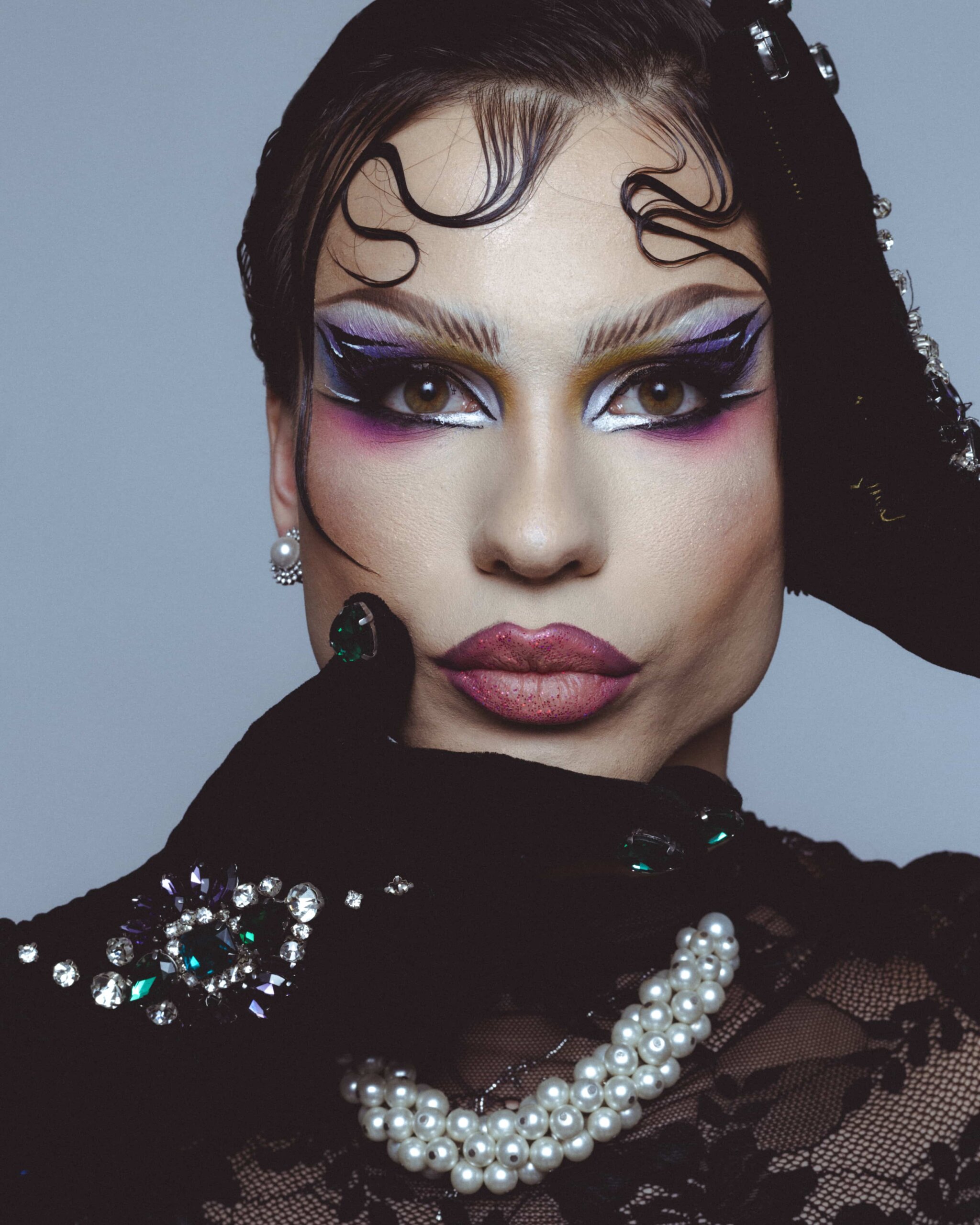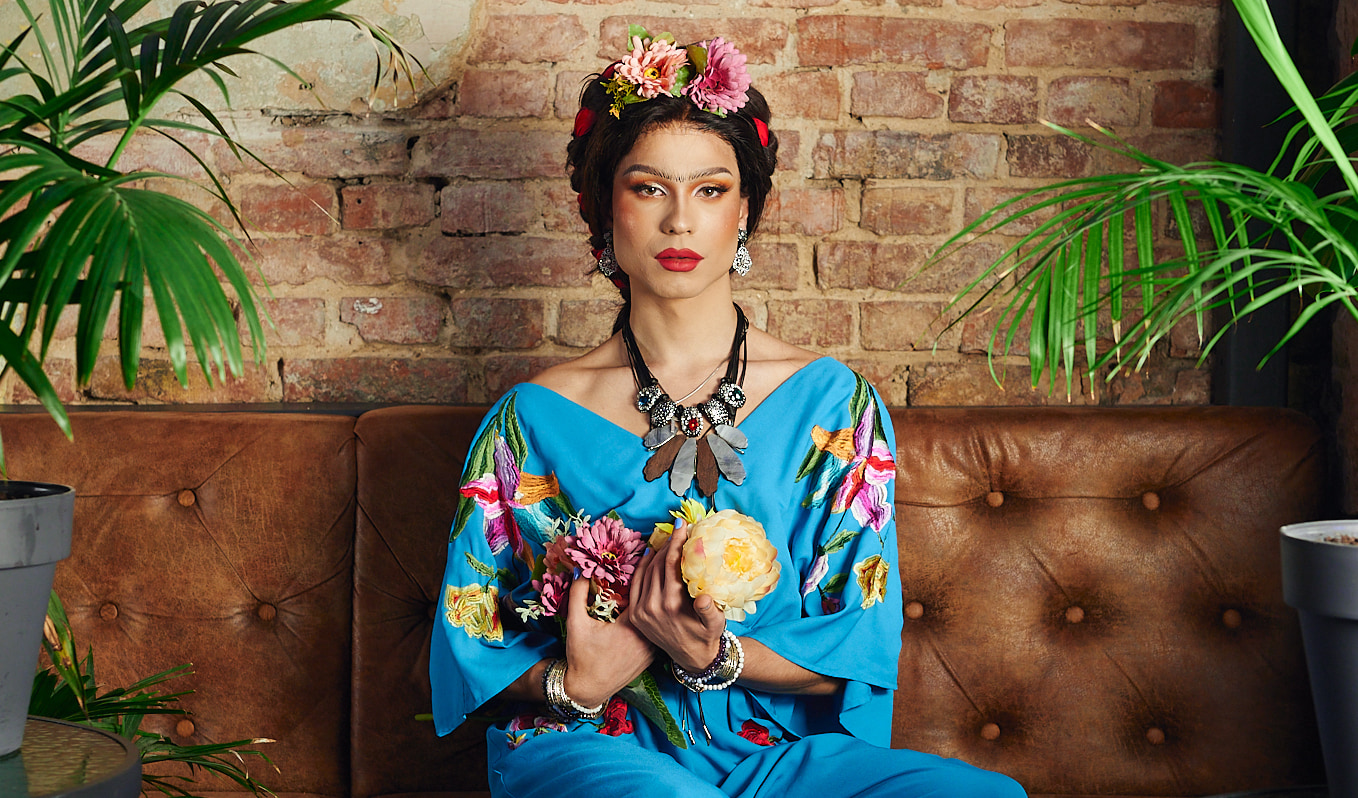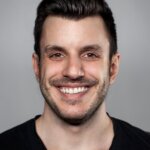Russia’s invasion of Ukraine has created a catastrophic refugee crisis in Europe. Approximately 4 million Ukrainians have left for neighbouring countries—almost all of them women and children. Poland has accepted the bulk of these refugees, welcoming them with open arms. However, LGBTQ+ refugees have reportedly faced discrimination and other challenges, which is not surprising given Eastern Europe’s endemic distrust of gender and sexual minorities.
To get some insight into what queer life is like in the region, I spoke with Warsaw’s most prominent Ukrainian drag queen, Himera, whose boy name is Stas (he requested that we use only his first name to protect his safety). We met in his apartment in downtown Warsaw where, sitting beside a wall brimming with wigs and clothes he’d sewed himself, he shared some examples of how LGBTQ+ refugees struggle to keep themselves safe in a hostile environment.
“LGBTQ+ life in Poland and Ukraine is both easy and hard,” Stas says. On one hand, widespread prejudice makes life difficult for many. However, this prejudice also imbues local LGBTQ+ communities with a deep sense of solidarity. Activists consistently rely on one another, creating robust and highly organized social networks well-suited for supporting incoming Ukrainians.
“The LGBTQ+ community is together, organized and supportive. We try to make it easier for LGBTQ+ refugees to find themselves in the new reality,” he says.
Some of Warsaw’s main queer advocacy organizations, such as Lambda Warszawa, have put together a list of volunteers in the city who would be willing to host LGBTQ+ refugees. That list has allowed Stas, who is fluent in both Polish and Ukrainian, to direct incoming refugees to shelter.
Stas mentions that these domestic efforts have been boosted by foreign fundraising and awareness initiatives. “My Polish drag queen friend, Polka Dot, who moved to the U.K., is organizing an event in London. She was very stressed and sad about the situation in Ukraine and felt that the queer community in London isn’t talking much about it.”
In an effort to drum up attention and support, Stas and Polka Dot hosted a live Instagram discussion where they fundraised in partnership with representatives from KyivPride and Fulcrum, one of Ukraine’s largest LGBTQ+ organizations. The money raised was given to both organizations to bolster their refugee support programs.
International news reports have discussed how trans women are often unable to cross the border into Poland: male Ukrainian citizens between the ages of 18 to 60 have been barred from leaving the country and, as many trans women are registered as men on their legal documents, they are subject to this restriction as well. However, this is not the only barrier that trans refugees experience.
“I personally helped one couple move to Poland. One of them was a trans guy—I wanted to connect them with a person who was transporting people from Lviv to the border,” Stas says. Lviv is a western Ukrainian city, about two hours away from Poland, which has become a hub for fleeing refugees. Some of those who arrive in Lviv have difficulty securing transportation to the Polish border, given the flood of people leaving the country.
Though Stas wanted to help get this couple to Poland, he knew that it would be difficult to vouch for the transporter he hired—what would happen if he hired someone who turned out to be transphobic? Would that put these refugees in danger?
He had to ask the refugees a number of uncomfortable and invasive questions—if the trans refugee could go “stealth” and pretend to be cisgender, they would be much safer.
Though Poland is known as a homophobic country, especially compared to the rest of the European Union, Stas did not seem too concerned about whether LGBTQ+ refugees would be safe once they arrived in Warsaw. “I’ve never experienced physical violence. Warsaw is a bit of a country within a country—it’s more forward thinking than some other cities in Poland, like we saw in Bialystok two years ago.”
Bialystok, a city in eastern Poland with a population of about 300,000, hosted its first Pride parade in 2019. The parade, which included approximately 1,000 marchers, was attacked by far-right nationalists, who threw rocks, glass bottles and flash bombs.
Stas says that although he finds Warsaw safe, he also went out of his way to enmesh himself within a supportive environment, so his experiences may not reflect the experiences of all of the city’s residents.
Stas continues to help refugees by volunteering as a translator.
Curious about his personal journey, I ask Stas about his own history. It’s something that had been on my mind since I first saw his Instagram, which was filled with impeccable makeup and outfits that seemed ripped out of fashion magazines. He had mentioned that he’d grown up in Ukraine but hadn’t lived there in almost seven years. What was his childhood like and how did he end up in Poland as a poised, hyper-femme drag performer?
Stas recalls that, growing up in a little mountain village in western Ukraine, homosexuality was simply never talked about. As a result, until the age of 12 or 13, he genuinely thought that he was the only gay person in the world. The internet helped him realize that there were others like him but, even so, he was filled with shame and self-loathing.
“I was trying to convert myself—to date girls and prohibit myself from watching gay porn. I thought gay porn is what made me gay, so I tried watching straight porn. It was difficult not being able to tell my parents. My dad was very homophobic. He would make jokes about gay people and say that they’re not good people and shouldn’t exist.”
Stas then won a competition organized by the U.S. Embassy in Ukraine, which allowed him to go on an exchange to the United States for a year. During this time, he was exposed to a whole new spectrum of people, which helped him realize that someone like him could be accepted and loved.
His drag career began when he was 17 years old. After he finished his first year of college, his parents gifted him a trip to Paris. He didn’t have much money and budgeted for a four-day vacation—but on the day he was supposed to leave, a protest shut down the airport, delaying his departure by another four days.
“Four extra days in one of the most expensive cities in Europe was not a good position to be in,” he remembers. Stas had no idea where he could stay, but the actor from whom he was renting his Airbnb offered to take him in. That meant that Stas would have to share the older man’s bed—Stas was terrified. “We all know how a lot of these stories end,” he says. “Thankfully, this person was very kind and never assaulted me in any way.”
Stas was depressed by his predicament. Utterly broke, he refused to do anything and slept as much as possible to pass the time. However, it turned out that his host was not only an actor, but a drag queen. They watched RuPaul’s Drag Race together—it was the first time Stas had seen anything like it. He thought to himself, “Why are these men dressing up as women, and why do they do it so poorly?”
Stas had a revelation—this was something he wanted to do. He put on a skirt and a see-through blouse and went to a club. He described it as the most avant-garde thing he’d ever done in his life at that point. He realized that he was done pretending to be “masculine as fuck” and that he no longer wanted to deny his femininity.
That planted a seed in his head, which spouted a year or two later when he fully embraced drag. “That’s why my drag looks the way it looks—that hyper femme glam killer that you’d see in Hollywood, like Angelina Jolie.”
He’d been an art student his entire life, which he channeled into his work, sewing his own clothes. “When I do burlesque, you cannot do that in regular clothes. The costume needs to unzip the right way. The layers have to come off, piece by piece, the right way. I sewed my first costumes without knowing how to sew. I was just, like, measure here and cut there and maybe it will work.”
His father did not accept his orientation, but his mother was much more open; in fact, she was enthusiastic about his drag. She asked if her son could help her with her makeup. Stas suspects that a part of her had always known that he was gay, because of his background in the arts, and that she saw drag as just an extension of his childhood creativity.

Credit: Courtesy of Himera
Both of Stas’ parents are medical professionals, which makes them highly regarded in their home village. However, people in small villages like to gossip. When word of Stas’ drag got back to the village, many neighbours began insulting Stas’ parents behind their backs.
Stas says that, because of this, his mother learned who her real friends were. The bullying he experienced as a child had made him “bulletproof and indifferent to assault.” Now his mother, like her son, learned to be resilient, too. “Me being a drag queen, having to walk the city in the night, dressed the way I am, I get a lot of shoutouts. That’s not something I care about or listen to. I hear it but I don’t absorb it.”
His family remains in Ukraine, but as they live in the western end of the country, which has not yet been ravaged by warfare, they are safe for now.
Being queer in Eastern Europe is not easy at the best of times, let alone during wartime. If Stas’ experiences are reflective of the welcoming nature of Warsaw’s LGBTQ+ community, then the queer refugees who make the long journey to the city will find themselves in good hands.


 Why you can trust Xtra
Why you can trust Xtra


